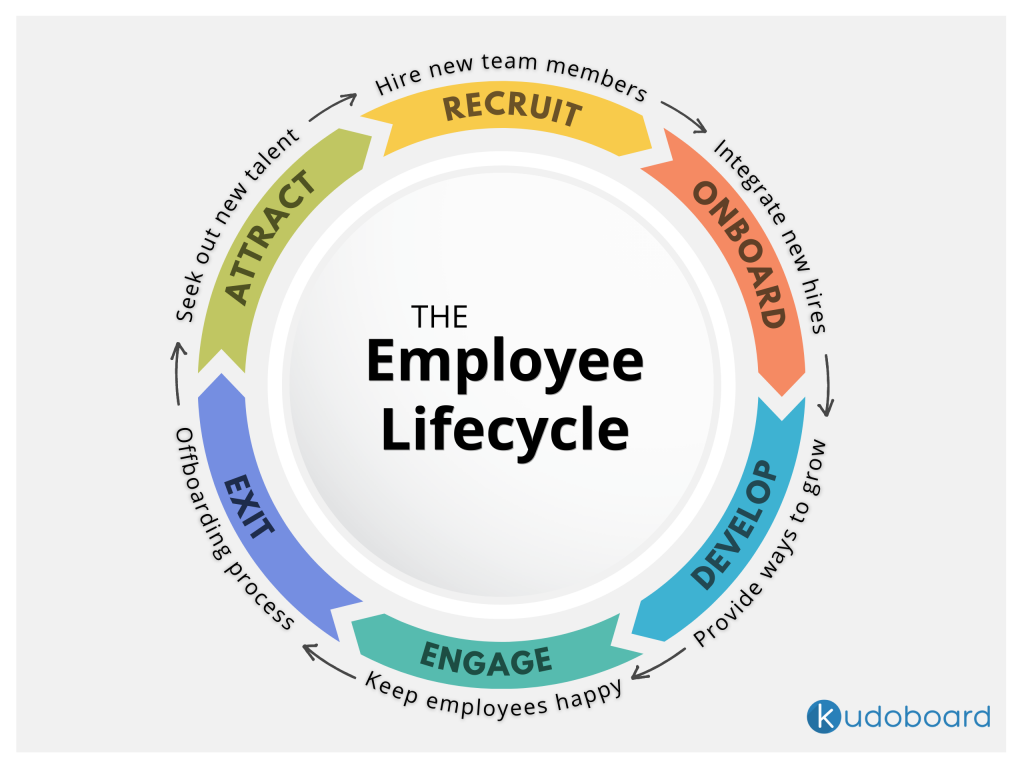The Great Resignation.
The Big Quit.
The Great Reshuffle.
Regardless of which of those terms you use, you are bound to strike fear into CEOs and HR leaders all over the country. Employees everywhere are working to redefine the expectations and standards in the workplace and their employers have no choice but to listen. According to the BLS statistics, over 47 million Americans quit their jobs in 2022, and 4 million of those workers quit in just October alone. Employees today are not just talking the talk; they are proving they expect more from their jobs and are not willing to stay loyal to a company that isn’t measuring up.

What Do Employees Want?
“For many of us, a large portion of our days is spent at work. In fact, the average person will spend 90,000 hours at work over a lifetime.”
If more than 60% of today’s employees are feeling a lack of hope and positivity about their future, and 50% of workers report being stressed out at work, something needs to change. But what adjustments need to be made in order to reduce those numbers? The go-to solution for some might be to increase salaries or throw more bonuses into the mix, but money is no longer enough of an incentive to stay in a difficult work environment. On average a person will spend one-third of their life at work; That is enough of a reason to make that experience a positive one. Current employees in the workplace report wanting the following things from their employers:
- Trust in their employers
- Honest communication
- Hybride of remote work schedules
- Flexibility in hours worked and time off
- Making proactive rest a priority
- Financial assistance for things like tuition, healthcare, and childcare costs
Adding in changes like those listed above are just a few ideas to improve the work environment for those who make up the foundation of a business, but they aren’t the only way. In order to make a big dent in the challenge of employee retention employers must look at the big picture. We have to zoom out and look at the entire employee experience as a whole and take each of the parts into account.
Understanding the Employee Experience
Imagine, for a moment, you’ve just sat down to eat at a restaurant you have never been to before. It’s all new so you are glancing around and taking in everything they have to offer. The decorations, the lighting, the comfort of the tables and chairs, the music playing, the friendliness of staff, the menu options, the taste of the food, the prices, etc… the list goes on. Each aspect of the meal will blend together to create an opinion of your restaurant experience. Then, with your knowledge of other dining experiences, you can compare and contrast them to deduce how you feel about the entire restaurant experience. This is exactly how the employee experience works.
The employee experience is a holistic way of seeing all of the pieces that make up an employee’s time in an organization, and adding them together to find the sum total. Just like in the restaurant example, everything that makes up the employee experience gets taken into account: the hiring process, integration into the company, company culture, technology used, the feel of the office space, interactions with management, and types of recognition are just a few examples. At first glance, it can easily be overwhelming to try and find all of the pieces and make sense of how they fit together. That is where the employee lifecycle comes in.
The Employee Lifecycle
The employee lifecycle, or the employee journey, draws us a map to show the path all employees walk through during their time at a company – from joining all the way until leaving. It takes us through 6 different stages: attraction, recruitment, onboarding, development, engagement, and exit. The goal of this model is to highlight each phase every employee will go through, demonstrate their importance, and then help leaders understand how to create a more positive employee experience. Just like studying the customer experience helps build a better business, knowing how the employee lifecycle impacts the employee experience will help create similar results.

Attract
What it is: Attracting new talent to a business and providing a first impression of the overall company brand.
How it Affects the Employee Experience: Employees are much more likely to consider applying for a job with a good reputation, so giving a positive first impression to the general public, regardless of if those people go on to apply, greatly impacts the employee experience. If talented employees have a positive association with a company name they are more likely to seek that organization out when looking for a job, which then lowers the costs needed for attracting and recruiting.
Recruit:
What it is: Bringing the talented attracted in the first phase into the hiring process. This includes steps like job listings, applications, and interviews.
How it Affects the Employee Experience: Everything is very delicate in this step because success hinges on whether or not someone completes the application process (over 90% of people never finish and submit their application!), and how they feel about the interactions they are having with recruiters and hiring managers. Prospective employees will analyze everything to determine whether or not they should move forward.
Onboard:
What it is: Bringing new hires in and helping them to assimilate the team, culture, and work environment. HR leaders instruct what to expect in an employee’s position and how to succeed in that role. This happens both in-person and virtual onboarding depending on the job position.
How it Affects the Employee Experience: a negative experience with onboarding is shown to result in lower employee retention rates as well as a less confident and engaged workplace. Onboarding sets the tone and pace for engagement and productivity during the employee journey.
Develop:
What it is: An ongoing practice of providing development and training opportunities for all employees. Regular training keeps workplaces updated on best practices and give employees the chance to learn or improve skills, explore passions and interests, and make advancements in their careers.
How it Affects the Employee Experience: According to a 2019 study, 94% of employees stated they would stay at their jobs longer if they would provide opportunities to learn. Putting practices in place that give employees chances to grow in areas that are important to them significantly impacts workplace engagement, company culture, productivity, and employee retention rates. Being able to learn new skills and see personal growth instills confidence and breathes new life into a workplace. Performance management also becomes much easier when working with employees who feel excited about the direction they are headed in, which contributes to an overall positive employee experience.
“The only thing worse than training your employees and having them leave is not training them and having them stay.”
Henry Ford
Engage:
What it is: To put it simply, this step boils down to employee happiness; how excited, dedicated, and loyal people feel about their job. It focuses on ways to retain talent in the workforce and keep employees feeling excited and engaged in their roles. This includes rewards, recognitions, and strategies for company culture and workplace appreciation.
How it Affects the Employee Experience: Workplace engagement is linked to a vast amount of things like employee satisfaction, productivity, company culture, and retention rates. Disengaged employees can be detrimental to a company in many ways. Not only will it directly affect the customer experience, but it also causes a tangible loss of profits. Gallup found that when employees do not feel engaged at work it results in:
- The average company losing at minimum a little over $2000 per employee
- 18% decrease in productivity
- 15% decrease in profits
- 37% rise in absenteeism
Disengaged employees cost their company the equivalent of 18-34% of their annual salary.
Gallup Research
Exit:
What it is: The process of separating an employee from their place of work for reasons like a layoff, termination, finding a different job, or retirement. It involves whatever offboarding strategy the company has implemented to aid them and their departing employees.
How it Affects the Employee Experience: This step is the last an employee has before leaving a company and it will “seal the deal” in terms of their overall employee experience. Go back for a moment to the image of the restaurant from earlier. If upon leaving you are met with rude staff, payment issues, or are ignored entirely because you are no longer at a table, are you likely to want to return? Which are you more likely to tell your family and friends about: the great food and cozy atmosphere, Or the negative experience at the end? Even if you share both the good and the bad, the negative parts will stick in people’s minds and prevent them from risking the same experience. In this situation, the customer story is the same as the employee story. How an employee leaves a company will color the rest of the experience, for good or for bad.
5 Reasons Why Employee Experience Matters

Once you put all of the pieces of the employee journey together it becomes much easier to see the whole picture that makes up the employee experience. Whether those pieces create a great employee experience picture or a negative one depends on how those pieces are used. We have always known that the customer experience is crucial for business, but we are finally starting to recognize the importance of the employee experience as well. 92% of HR leaders in 2021 said that employee experience was a top priority, and it isn’t for nothing. Here is a list of 5 reasons why employee experience matters:
- Employee Retention
Retaining talented and high-performing employees, especially in today’s job market, is high on everyone’s priority lists. Only 26% of employees polled say they enjoy their job enough to stay. That leaves 74% of the rest of the workforce who would be willing to switch jobs if the right circumstances were presented (that’s not a great sign in case you were wondering). Having a strong employee experience increases retention rates because when people feel engaged and supported in their work they are more likely to stick around.
Read More: Why Employee Retention Matters
- Turnover Reduction
We all know that turnover is not cheap. It is estimated that replacing an employee costs between 50-125% of their yearly salary and that doesn’t cover the emotional and mental costs that come. Employee experience plays a big role in reducing turnover rates because a positive employee experience results in more engagement in the workplace, better job satisfaction, and a healthier work-life balance – all of which contribute to significantly lower rates of regrettable attrition.
- Company Culture
Company culture is the culmination of an organization’s goals, values, environment, and employees. It isn’t something that is fixed or set in stone, but rather a flexible and evolving aspect of a business. How weak or strong a company’s employee experience management is will directly impact the company culture. When employee experience is positive there is better engagement, stronger team dynamics and collaboration, and a positive outlook in the workplace. Each of these things bleeds into every aspect that creates the company culture.
- Team Camaraderie
Just like we mention in the section above, employee experience is directly linked to team dynamics. Camaraderie in the workplace occurs when coworkers feel like they can trust each other, enjoy each other’s company, and feel a sense of pride in their work. Creating strong steps of the employee lifecycle creates the foundation of the employee experience that can foster where team camaraderie can flourish.
- Creativity & Innovation
Feeling safe and supported in the employee experience is a breeding ground for innovation and creativity. Because employee experience is heavily intertwined with engagement in the workplace, and engagement is a necessary precursor to creativity, having a positive employee experience leads directly to innovative and creative ideas. It can empower employees to take risks, feel ownership of their work, collaborate with others, and think outside the box.
Conclusion
Employee experience matters because it shows us all of the pieces that make up the puzzle of what makes a business successful or not. Having a good understanding of each piece, and prioritizing a strong employee experience strategy can make all of the difference. Do your company a favor in this intense job market we’re in and use your knowledge of why employee experience matters to set you ahead of competitors and help your business thrive.




